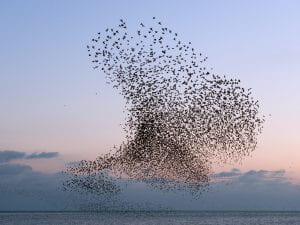6-7 June 2024
University of Brighton
Online & in-person event
A two-day symposium aimed at bringing together researchers venturing to make sense of human-animal relationships & multispecies entanglements, using novel, qualitative & creative research methods. Supported by the Arts & Humanities Research Council (AHRC) and the University of Brighton’s Centre of Arts & Wellbeing.
Context
‘there is no such thing as the animal or the human-animal-relationship, but there is a whole spectrum of possible relationships’ (Colombino & Bruckner, 2023, p. 38)
There is a growing scholary interest in the experience and subjectivity of animals, in human-animal relationships, and in the function and standing of animals in culture and society across the humanities and social sciences. The centring of animal experience across multiple settings has been an explicit goal of overlapping interdisciplinary movements for some time now, including (critical) animal studies, human-animal studies, animal history, multi-species methodologies and posthumanism.
These developments have contributed to the elaboration of alternative theories and methods that place the life of animals and the dynamics of human–animal relations firmly in the spotlight (Johnson, 2015, p. 299). Methodologically, researchers seek tools for moving ‘beyond anthropocentric histories and social narratives… putting animal life in the spotlight’ (Johnson, 2015, p. 299); for studying animals as more than merely ‘passive objects for humans to act upon or use as tools or resources’ (Mullin, 2010, p. 148); and for accounting for animals as active contributors to human-animal interpersonal, social and cultural encounters. However, getting at the ‘animal side’ of human-animal relationships remains a challenge for researchers in any field, a risky practice whereby most of our established methods originate from and remain grounded in the exclusive study of human activity.
This symposium encourages contributions from researchers developing and utilising methods that address animal experience in interpersonal, social and cultural settings, both ‘sides’ of human-animal relationships, and/or the messiness of multispecies entanglements. We are particularly keen to encourage contributions from scholars, researchers, and practitioners from exploring theoretical and methodological innovations, and the use of creative, arts-based and visual methods in understanding human-animal and multispecies relations, that bring fresh insights and perspectives on human- animal and multispecies entanglements (e.g. Fawcett & Johnson, 2019; Fennell, 2022; Haanpää et al. 2019; Marguiles, 2019; Sachs Olsen, 2020; Turnbull, 2020).
Haraway’s list of ‘human–animal worlds’ where ‘ordinary beings-in-encounter’ takes place is instructive as to the range of topics being explored in animal, multispecies and human-animal studies, the posthumanities and anthrozoology: ‘in the house, lab, field, zoo, park, truck, office, prison, ranch, arena, village, human hospital, slaughter house, vet clinic, stadium, barn, wildlife preserve, farm, city streets, factory, and more’ (Potts and Haraway, 2010, p. 322). The ‘and more’ is equally important here – this list is indicative only. We invite researchers from any discipline and any career stage to engage with any aspect of human-animal and multispecies worlds.




Leave a Reply